In a competitive world, it is rarely enough to have a good product or service. Moreover, it is often not enough to simply advertise these goods to create lasting relationships with customers. Creating a strong brand identity and using brand advertising is a key to building such trust and achieving business success. How can it help and how is it different from direct response marketing?
What is brand advertising?
Brand advertising is a type of strategy that develops brand recognition, customer loyalty, and builds lasting relationships with clients. The purpose of brand ads is to capture people’s attention, establish a stable positive brand identity, brand credibility, and awareness.
The brand identity is an idea behind the product or service, a concept that allows customers to recognize offers made by specific companies out of the huge number of similar products and services.
What does branding include?
Branding includes name, logo, packaging, pricing, and other specific traits of the product. Those are essential elements of brand identity. The idea behind the offer can define brand advertising strategy, as it is often determined by values promoted by the company more than by the actual product.
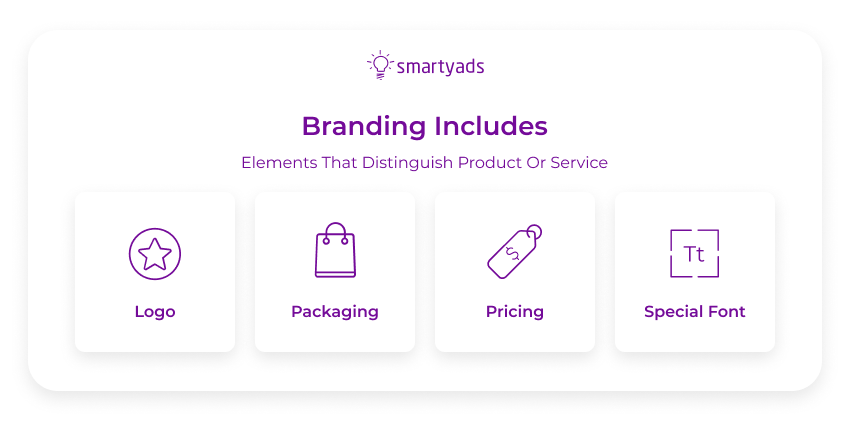
Brand advertising examples
Companies that use brand ads are usually focused on connecting with customers on both emotional and intellectual levels in order to create a unique and memorable brand image behind their products and services.
Some of the most famous brand advertising examples include Coca-Cola, as they involve strong emotional associations and consistent brand identity that we recognize over years.
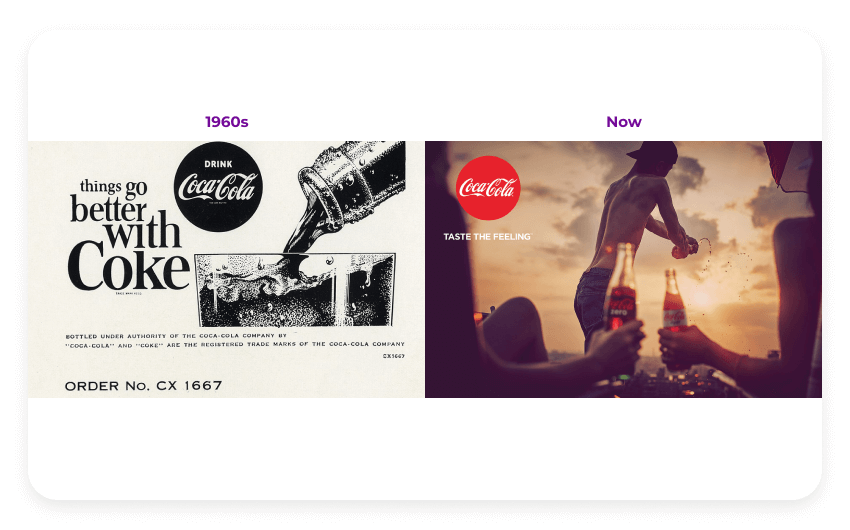
As we can see, the task of brand ads is not to sell the product as fast as possible but to create a strong brand identity.
The same application of brand positioning we can also see in the Nike display ad. With a certain image and slogan, a combination of colors Nike created a certain image that is strongly associated with a brand. For online display advertising these elements are indispensable for the company that wants to be memorized.
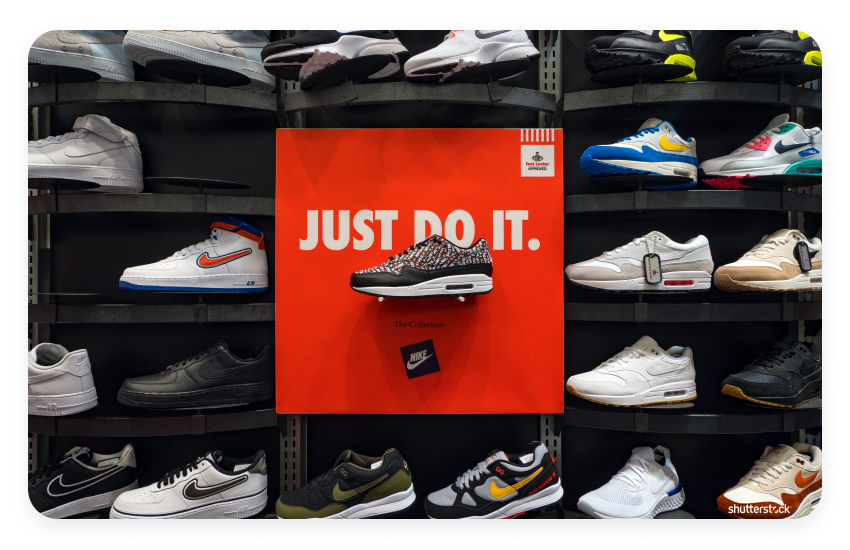
The Burger King advertisement focuses on the emotional side of the ad - exactly this element creates a strong brand recall for branding campaigns.

World’s largest fast-food restaurant McDonald's uses various brand advertising tactics, one of them is making their food appealing to the kids.

Although marketing campaigns of Apple are minimalistic like the design of their gadgets, Apple fans always recognize the signature features of their favorite brand.

The Amazon eCommerce store allures Internet users with an image of the largest American online purchasing platform that features beneficial prices.
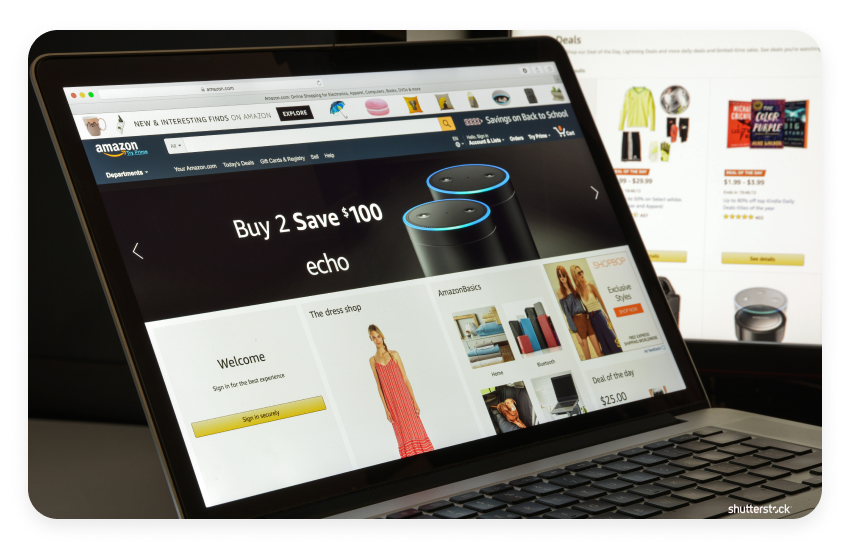
Nissan has always is also among companies oriented on brand advertising because it helps the brand to maintain the image of the market leader through the years.

The same branding strategy applies L’Oreal to maintain the image of a leading mass-market body/face/haircare company.
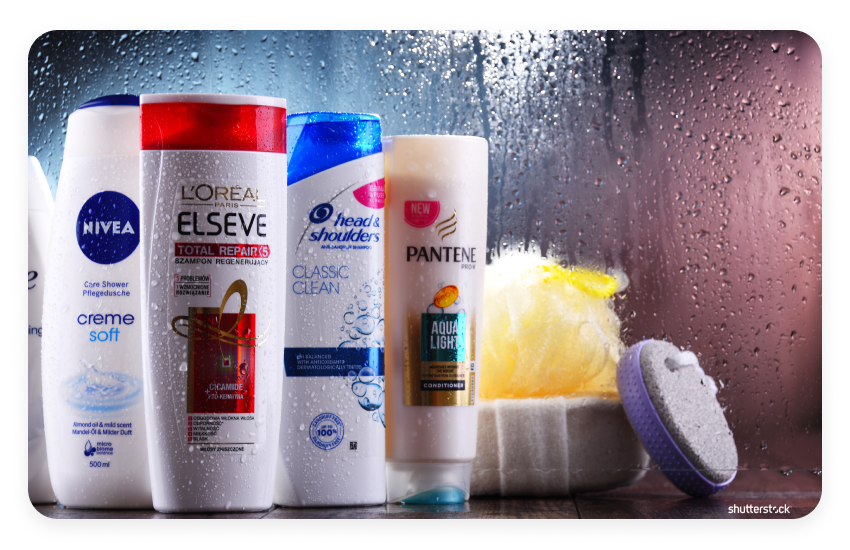
Who should use brand advertising
Generally, two types of advertising strategies are distinguished - brand advertising and direct response marketing. Direct response brand ads encourage viewers to take action, those are easily measurable based on the achieved results of the campaign. Unlike direct response, brand advertising campaigns don't usually involve calls to action and are more focused on impressions and reach.
How to decide which programmatic ads strategy your business needs?
Here are a couple of exemplary cases of brand advertising campaign goals:
- Introduction of the new product or company to the market;
- Maintaining brand credibility and awareness around an already established brand;
- Supporting customer loyalty and keeping your audience interested;
- Increasing leads and sales in a long-term perspective;
- Adding up new value to the brand credibility or entire re-branding of the company;
These brand advertising goals often help each other - introducing a new product can also increase customer loyalty while maintaining brand awareness can also help to get more leads. In contrast, direct response marketing suits better when it comes to exact goals. Direct response goals may include increasing sales, promoting specific offers, or building a mailing list.
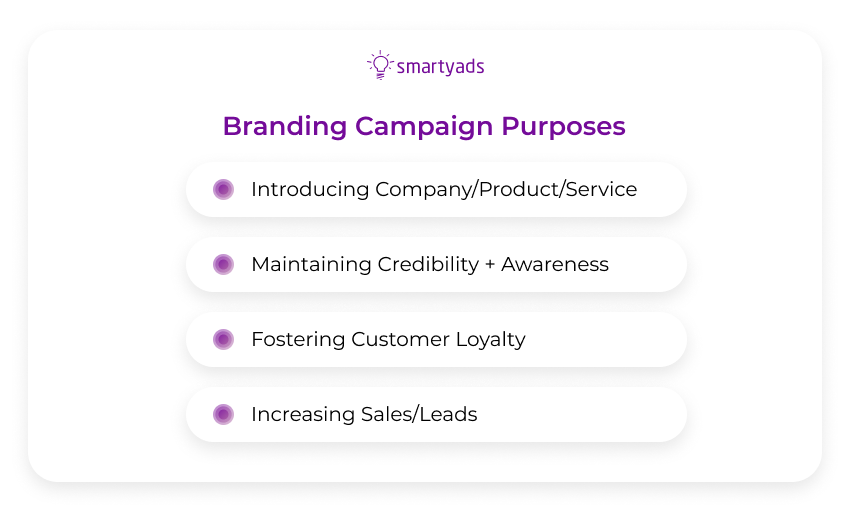
How brand advertising works
Now that we’ve got a brand advertising definition, let us move to the implementation of brand ads. The development of a brand advertising campaign usually consists of the following steps:
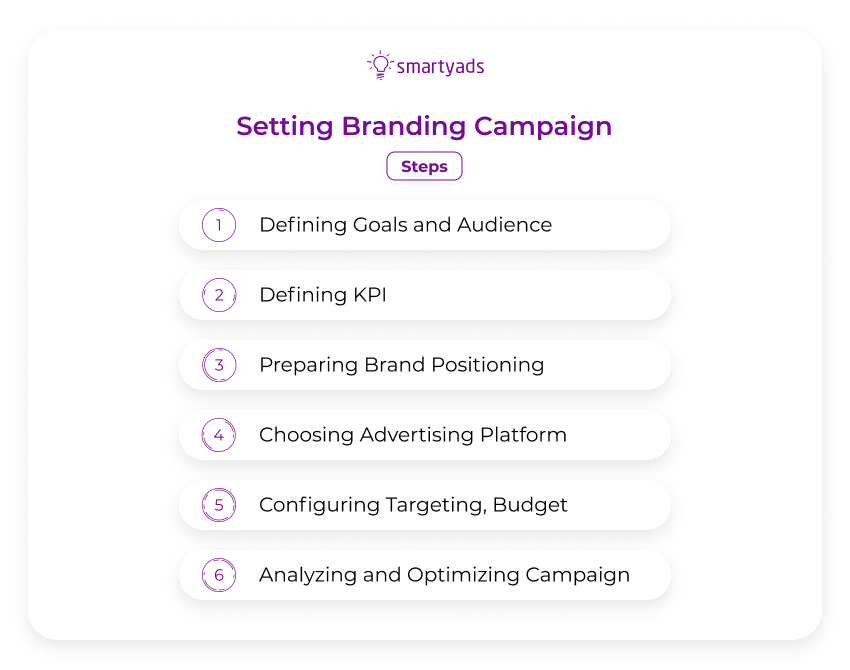
Step 1. Defining goals and audience
Before launching an advertising brand campaign you should define clear goals. For the case of brand advertising, the objectives can include increasing brand awareness, introducing new products, creating a positive brand image, etc.
The choice of the goals also determines the target audience persona, and sometimes each segment of the audience can be assigned a unique business goal.
In order to achieve these brand advertising goals, it is necessary to precisely understand the main characteristics of each segment among your audience. These usually include demographics, geolocation, social position, their interests and problems, channels they choose, etc.
Step 2. Brand positioning
The second most important thing about your brand advertising strategy is market research and subsequent brand positioning. It requires some time and effort, but a correct vision is indispensable for precise brand positioning. There are several things to consider while creating brand ads:
- Before launching an advertising brand campaign make market research. Investigate the industry landscape, how saturated the market is, who are the main competitors, their unique features, and target audiences.
- The current position of the brand - its popularity and customer’s attitudes, advantages, and disadvantages of the product, main features.
- Unique value or unique selling proposition - a specific feature of the product or the particular problem it is designed to solve not covered by the competitors yet.
- Apart from practical usage, there is also often an added value, such as, for instance, prestige, fashion, high social status, or a feeling of belonging.
Quality is usually paramount for brand advertising. However, nowadays brand positioning becomes a decisive part of a company's success or failure much more often. Remember that the image of the product in the mind of consumers is sometimes even more important than the actual product itself.
Step 3. Application
Based on the chosen goals, audiences, and a desirable brand positioning, one can start acting:
Choosing the right tools and strategies
Depending on the target audience, one should choose tools and channels for brand advertising, duration, and other details of the campaign. It is also important to create a unique strategy for each channel taking into consideration specifics and how your audience uses this channel.
Setting a budget
Important details of your brand advertising strategy can depend a lot on your budget and its distribution. Emphasize channels that perform best and cut your expenses on ones that don’t work well. Always keep your main goals in mind and distribute your resources accordingly.
Setting up a campaign
This step is an implementation of your brand advertising strategy. Set up a digital advertising campaign on demand-side platform, and let it automate media-buying based on your conditions (targeting, frequency, campaign budget, etc). The platform will automatically find the right media and advertising inventory and serve impressions to your brand's audience.
Running, optimizing, and campaign management
After the creation of the campaign, it is important to closely monitor and track its performance long-term and short-term. Pay attention to changes in your brand traffic - the increase in searches for your company’s name is a good sign for your brand advertising campaign. Sometimes advertising campaigns can perform better after changing a small detail so take action when necessary. Be sensitive about such things and timely optimize them to dramatically influence the success of your endeavor.
Conclusions
Using brand advertising can help businesses reach many goals in the long-term perspective. With a brand identity, a defined set of channels, and a precise budget, one can start building a unique and consistent brand image by setting perfect brand advertising campaigns. A solid brand image and brand identity can serve as a core for lasting and trustworthy relationships with your customers which is a key for successful business development.




